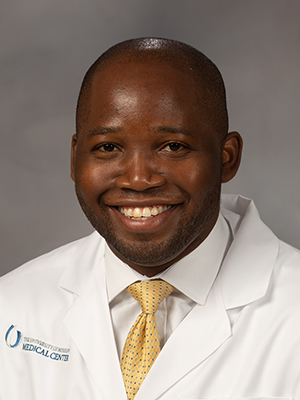Take steps now to prevent pain, immobility from osteoarthritis later
At 63, Sherrie Adams has endured pain in her knees long enough that she’s about had enough.
“Just hurting and aching all the time, a nagging feeling in my knees and joints” is how the Carthage resident describes the discomfort. “I went to the doctor and we began processes of elimination.”
X-rays unmasked the root of her pain: osteoarthritis.
While arthritis is inflammation of a joint, when the protective cartilage that cushions the joint wears down over time, the result is osteoarthritis.
The most common form of arthritis, osteoarthritis afflicts more than 300 million people worldwide; 85 percent of those cases involve the knee.

There are two types of osteoarthritis, said Dr. Sherry Colson, associate professor of physical therapy. The primary kind develops as we age and usually affects the knees, while the secondary is caused by a previous trauma or deformity of the joint.
Though most prevalent in those over 50, not everyone will suffer, said Dr. Izuchukwu Ibe, assistant professor of orthopedic surgery, who is treating Adams.

“There are many who age and do not have symptomatic arthritis requiring surgical intervention,” said Ibe.
Still, developing primary osteoarthritis is just another inevitable perk of getting older, much like wrinkles or gray hair.
That’s because changes in the joint structures, particularly the knees and hips, usually result from “normal wear and tear and the aging process,” said Colson.
“Pain is the most important symptom as it is the most bothersome one for patients, especially pain with activity, sitting, standing, going up and down stairs,” said Ibe. “The next bothersome is the decrease in range of motion or stiffness. Being unable to fully move a knee or hip can be very limiting. In some cases, instability can develop which is problematic because it can result in near falls or falls.”

Other symptoms include swelling, warmth and popping of the joint, said Dr. Ryan McGlawn, associate professor of physical therapy, who has worked with both osteoarthritic and post-joint-replacement patients at the Pavilion.
Anybody experiencing pain should see their primary doctor first, said Ibe. “There are many causes for joint pain, and it is important that the symptoms are evaluated and all potential causes are ruled out. An X-ray is a good study to assess for arthritis.”
Treatments can be either invasive or non-invasive, said Ibe. In some cases, simple lifestyle changes including weight loss and anti-inflammatory medications can provide relief.
A physical therapy referral is also among the first methods used to treat symptoms.
“Joints like to move,” said McGlawn. “The best treatment includes exercise and mobility.”
Other conservative treatments used by physical therapists include topical analgesics, heat and/or cold, aquatic therapy, use of an assistive device, and bracing, said McGlawn.
“The worst thing you can do is ‘take to the bed’ or limit your mobility,” explained Colson. “Keep moving the best you can. No, WD-40 doesn’t work on osteoarthritic joints.”
The kind of exercise you do matters because the wrong kinds of movement can exacerbate symptoms. Walking, biking, cycling, swimming and dancing are usually safe and effective, said McGlawn. If that’s too painful, aquatics therapy is recommended. A physical therapist can individualize an exercise program to meet each patient’s unique needs.
The two physical therapists caution patients to avoid high-impact activities like jumping, running, tennis, rock climbing, and racquetball. Likewise, if you have arthritis in your hands, avoid repetitive activities like knitting.
If noninvasive treatments fail, Ibe recommends patients consider invasive options. He suggests intra-articular injections first, in which medication is injected directly into the joint to relieve pain.
Adams said she has tried the injections, as well as ibuprofen and acetaminophen. She finally made an appointment to see Dr. Ibe “when the pain got so bad, none of the above helped.”
“Orthopedic surgeons usually tell my patients, ‘When you can’t stand it anymore, it is time for a joint replacement,’” said Colson, who has worked with nursing home patients.
Ibe said replacing the arthritic joint is a more definitive invasive procedure because it can provide lasting relief from pain and restore the joint range of motion.
Of the 15 to 20 osteoarthritic patients Ibe sees on an average day in clinic, only four or five require surgery, in part because he first maximizes all conservative, non-invasive measures, he said.
Adams, who has always enjoyed an active life in Carthage, said she will likely make up that four or five.
“After seeing doctors, and X-rays prove that going forward was a necessary part of healing or helping with pain to make a better quality of life … he [Dr. Ibe] said he believes the surgery can help me, and I believe and trust his judgement,” said Adams.
Because osteoarthritis is irreversible and incurable, being proactive early on can go a long way toward preventing pain and immobility later.
“Someone in their 30s could show radiographic changes but not have symptoms,” said McGlawn.
Though there’s no way to prevent osteoarthritis, maintaining a healthy weight is a key protective factor because extra pounds put more pressure on the joints, accelerating the condition, said Ibe.
“We do know that an active lifestyle, good range of motion and strong leg muscles help keep the knee joint limber and take pressure off the cartilage,” said Ibe.
The above article appears in CONSULT, UMMC’s monthly e-newsletter sharing news about cutting-edge clinical and health science education advances and innovative biomedical research at the Medical Center and giving you tips and suggestions on how you and the people you love can live a healthier life. Click here and enter your email address to receive CONSULT free of charge. You may cancel at any time.



